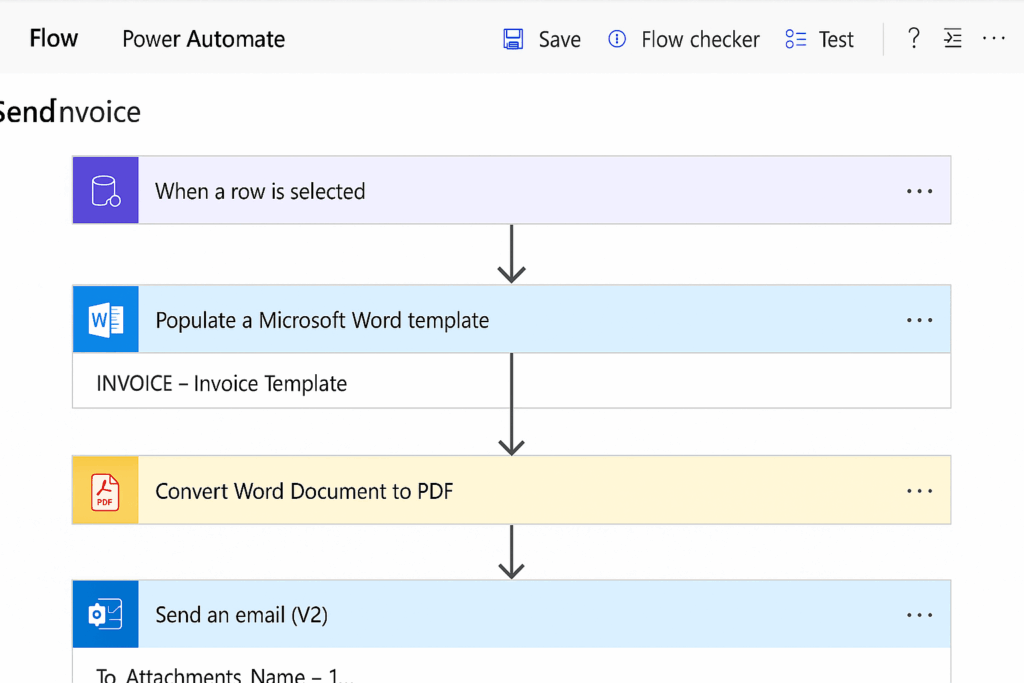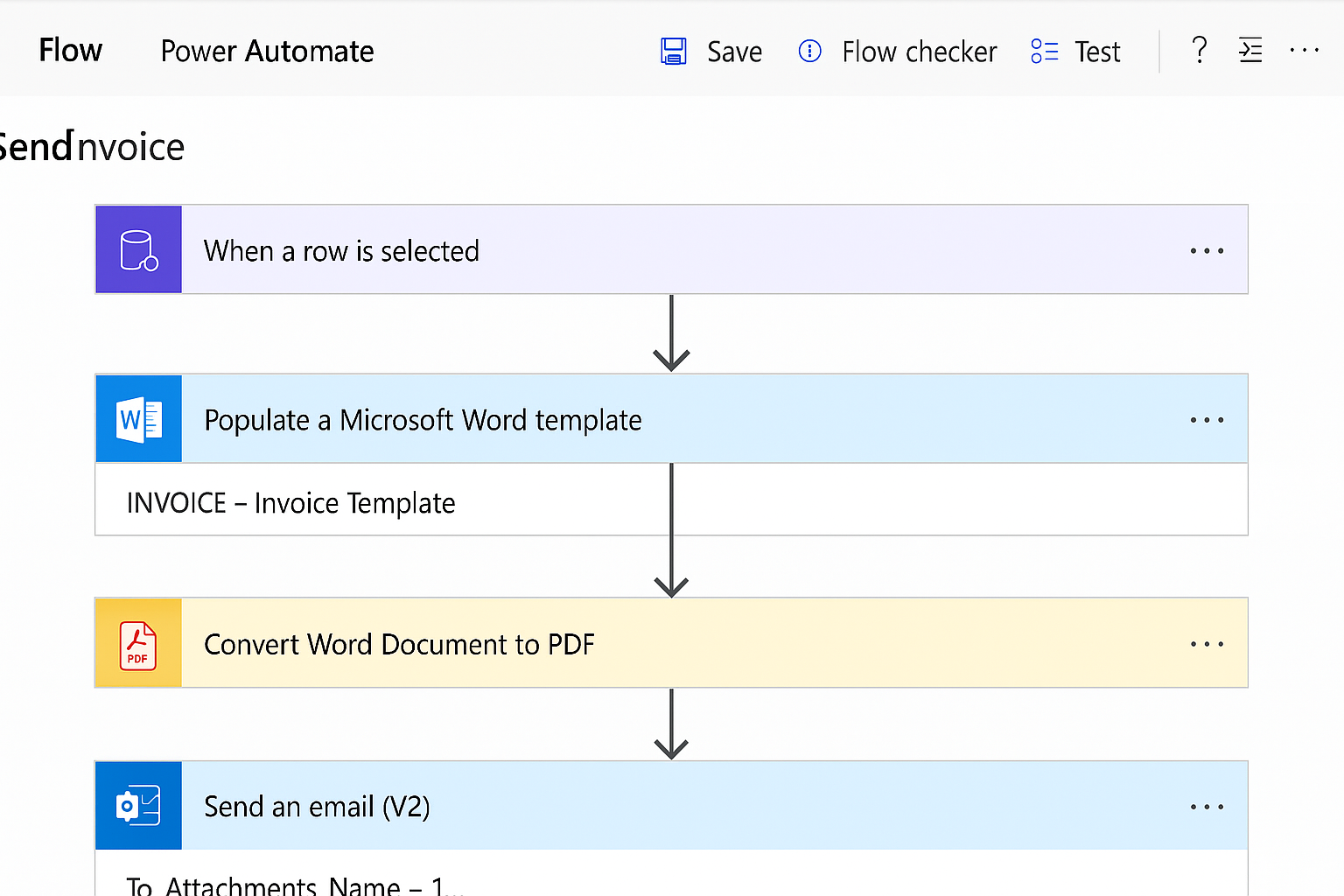In Dynamics 365 Customer Engagement (D365 CE), generating PDF documents is a recurring business requirement. Whether for quotes, invoices, contracts, or audit-ready forms, many organizations need a seamless way to export records into well-formatted PDF files directly from the Dynamics UI.
In this article, I will summarize common approaches to implement PDF generation in Dynamics 365—ranging from out-of-the-box options to custom and enterprise-level solutions. I’ll also include additional methods and suggestions based on real-world enterprise projects.

Out-of-the-Box: Word Template + Export to PDF
One of the most accessible ways to generate PDFs in D365 is using Word Templates. These can be created in Microsoft Word and uploaded to an entity like Opportunity, Quote, or Invoice.
How It Works:
・Use “Download Template” to get a sample layout.
・Bind fields using content controls in Word.
・Upload it back to Dynamics and expose it via Ribbon.
・Optionally enable “Export to PDF” with App Designer or Ribbon Workbench.
Pros:
・No-code solution.
・Easy to maintain.
・Supports moderate formatting needs.
Limitations:
・Limited layout customization.
・Cannot natively handle nested tables or subgrids.
・No automation unless paired with Power Automate.
Power Automate: Flow-Based PDF Generation
You can combine Word Templates with Power Automate to create PDFs and send them by email or attach to a record.
Typical Flow:
1, Triggered by a button or record change.
2, Generates Word document → Converts to PDF.
3, Sends via email or saves to SharePoint/Dataverse.
Useful Connectors:
・Dataverse “Export Word Template”.
・OneDrive/SharePoint PDF conversion.
・Premium connectors (e.g., Muhimbi, Encodian).
Custom Development: HTML + JavaScript or Server-Based PDF
For complex formats or branding needs, custom HTML-to-PDF generation offers the most flexibility.
Tech Stack:
・HTML + FetchXML to generate dynamic content.
・Libraries like jsPDF, pdfMake (client-side) or iTextSharp, Puppeteer (server-side).
・Triggered via Ribbon button or plugin.
・PDF output saved to Notes or Azure Blob.
Pros:
・Fully customizable layout.
・Can include images, subgrids, signatures, QR codes.
・Integrated tightly into UI.
Cons:
・Higher development cost.
・Needs error handling, security, and performance tuning.
ISV Solutions: DCP, Xpertdoc, Adobe Sign Integration
For enterprises with heavy document requirements, ISV solutions like DocumentsCorePack or Xpertdoc provide a complete platform for:
- Template design
- Conditional logic
- Digital signatures
- Multi-language output
- Delivery and archiving
These are especially useful in regulated industries (e.g., Pharma, Finance).
Additional Implementation Patterns
Power Pages + PDF Rendering
Expose data securely via Power Pages and use client-side (JavaScript) or Azure Functions to render and download PDFs.
Use case: customer self-service, external access, or dynamic layouts with high branding demands.
SSRS Reports + PDF Export
SSRS (SQL Server Reporting Services) can be used to generate PDFs directly with advanced layouts.
Use case: high-volume, paginated reports or multi-entity summaries.
Note: this approach is legacy-heavy and not cloud-native, but still used in some scenarios.
Azure Logic Apps + PDF Services
Use Logic Apps to orchestrate PDF generation with REST APIs, Azure Functions, or 3rd party services. Good for advanced workflows or integration needs.
Best Practice Recommendations
Permission and Audit Considerations
・Implement PDF generation only for authorized users.
・Include user name, timestamp, or watermarks for traceability.
・Log generation events into audit or logging tables.
Template Governance
To prevent template sprawl or quality issues:
- Centralize template management (use a custom entity if needed).
- Track template version and usage.
- Provide an internal UI (via Canvas App or Model-Driven App) for template uploads or approval workflows.
Summary
Align Solution with Business Scenarios
| Scenario | Recommended Approach |
|---|---|
| Simple document generation | Word Template + Export to PDF |
| Automatic emailing or batch output | Power Automate + Word Template |
| Complex layout, branding, subgrid | Custom HTML + PDF |
| External user access | Power Pages + PDF |
| High-volume reports or legacy migration | SSRS Reports |
| Signature workflows or document lifecycle | ISV solutions (e.g., DCP, Adobe Sign) |
Summary Table
| Method | Use Case | Pros | Cons |
|---|---|---|---|
| Word Template + PDF Export | Simple documents | Easy, no code | Limited layout |
| Power Automate Flow | Email + Automation | Scalable | Limited formatting |
| Custom HTML to PDF | Advanced design | Full control | Higher cost |
| ISV Tools | Enterprise features | Template mgmt, signatures | Licensing cost |
| Power Pages + PDF | Public access | External-friendly | Needs extra infra |
| SSRS PDF Export | Paginated reports | Strong reporting engine | Legacy tech |
Closing Thoughts
PDF generation in Dynamics 365 can range from simple document export to sophisticated automation and external delivery. By aligning the solution with your data model, business process, and system landscape, you can provide users with a seamless and compliant document experience.
Start with out-of-the-box solutions when possible, and scale up to custom or ISV-based methods as complexity increases. Also, don’t overlook governance, permission control, and long-term maintenance in your design.



コメント